By Brittany Chiu
Plant-based proteins have been all the rage with companies such as Beyond Meat, Impossible Foods, Perfect Day and Eat Just, making their meat-free dishes highly popular among vegan and non-vegan consumers.
According to Ipsos Retail Performance who conducted a 15-year period study research shows that plant-based diets increased from just 290,000 in 2004 to more than 9.7 million people in 2019.
It’s no wonder that partnerships between these meat substitute companies and Starbucks, McDonald’s, Burger King, KFC, etc. have taken these new food options to the mainstream.
But did you know?
China, the largest meat importer and consumer in the world, is actually the birthplace of meat substitutes and has been keeping that tradition for more than a thousand years.
Days of “temporary vegetarianism” were observed during the Zhou Dynasty (1046–256 BC). These often came after the deaths of important people in the state or within the family. For instance, if there is a death of a loved one, it is customary of certain families to not consume meat for 49 days as a sign of respect. Despite this age-old custom and the invention of tofu (the foundation of meat substitutes), vegetarianism did not take off in China until the introduction of Buddhism.
Even then, Chinese people of the Tang Dynasty (618–907 AD) were still mainly meat-eaters. It wasn’t until the Song Dynasty (960–1279 AD) that elaborate vegetarian/vegan cuisine, in the form of meat substitutes, was developed. Ingredients included wheat gluten, soybeans, lotus roots, mushrooms, and more. The most comprehensive recipe book《山家清供》up-to-date from the Southern Song Dynasty.

Vegetarian/vegan cuisines also vary across Greater China. People from the South usually cook slightly sweeter, less oily, and milder on the sauces whereas the North is heavier in taste and more savory. Naturally, the spread of Buddhism to Korea and Japan has also resulted in a great variety of vegetarian/vegan dishes as well. Here are some traditional vegetarian/vegan dishes that will be a hit among the Chinese-American communities in the U.S!
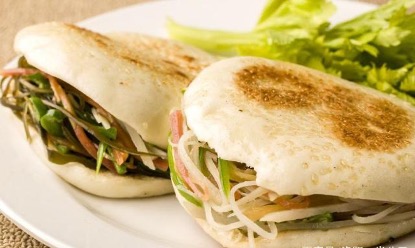
- The Chinese Hamburger 肉夹馍
This is one of the most iconic Xi’an foods that dates back to the Qin Dynasty (221–206 BC). It is commonly served with either pork or beef, but vegetables are another alternative as well. Customizable with any vegetables that you like, some common choices are julienned cucumbers, carrots, pickles, potatoes, kelp, and wood ear mushrooms.
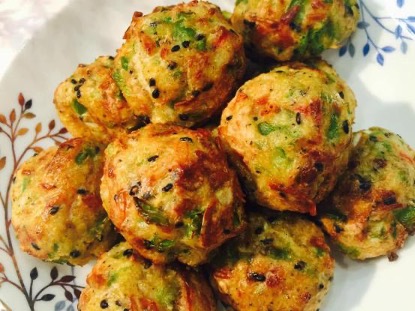
- Veggie Balls 素丸子
This is a very iconic Beijing dish that is typically made with pork, but the vegetarian version is made of flour and your choice of vegetables and deep-fried. The most common combination is green radishes and carrots.
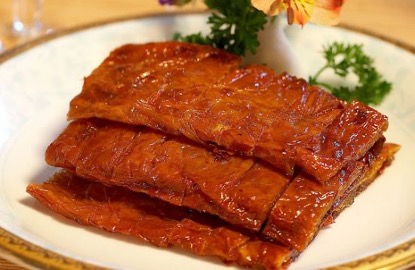
- Vegetarian Duck/Goose 素鸭/素鹅
There are many variations of this goose or duck dish. Essentially, the “meat” is made of various veggies wrapped in bean curd, pan-fried, and eaten with a savory or sweet sauce. The reason why it’s called “goose” or “duck” is due to the similar texture and color of the roasted animal skin. The process of making this dish is laborious. While it tastes nothing like the actual fowl itself, it remains a delightful deception to the senses. Though it may be difficult to find, certain restaurants across the U.S. do serve this dish.
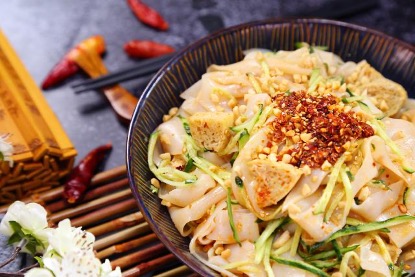
- Cold Noodle Dish 凉皮
This is a specialty of Shaanxi province. Making this dish is no easy task, but it is still doable at home. It requires the right amount of water and several rounds of starch and gluten separation from the dough. Finish it off with sesame paste, black vinegar, chili oil, salt, the leftover gluten, cucumbers, and voila!
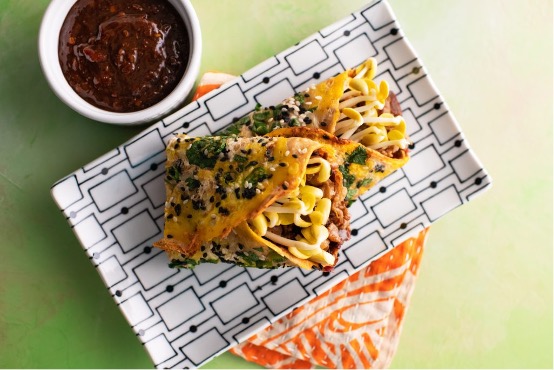
- Jianbing 煎饼
This amazing Chinese breakfast crepe has its origin in Shandong, but the Tianjin version is the most well-known. The crepe is traditionally made from a batter of wheat and grain flour (or in the case of Tianjin: mung bean flour). It includes has eggs (optional), lettuce, Chinese fried crackers or a dough stick, pickles, scallions, coriander, sesame seeds, and a mix of sauces. This street food snack is so popular that it can be found in most Chinatowns.
To find more Asian-influenced recipes, check here: https://chooseveg.com/blog/celebrate-aapi-month-by-following-these-13-vegan-influencers-and-foodies-on-instagram/.
